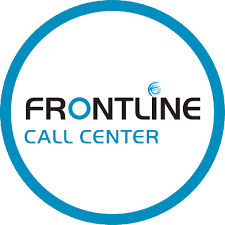American Rescue Plan Act
After a day of fraught debate, the American Rescue Plan Act (ARPA) was passed by the Senate on Saturday, March 6. The $1.9 trillion relief bill now returns to the House for the body to approve the changes made in the Senate; it is expected to pass quickly and then be sent on to President Biden’s desk. Proponents of the ARPA are working with the goal of having the bill signed on or before March 14, when current federal unemployment benefits expire. Read on for details on the provisions included in the ARPA.
Individual Stimulus Checks
Estimated portion of the stimulus package: $422 billion
The ARPA includes another round of economic impact payments for people who meet certain income eligibility requirements. Single taxpayers who earn less than $75,000 will receive $1,400 and married taxpayers filing jointly who earn less than $150,000 will receive $2,800. The payments phase out at an adjusted gross income of $80,000 for single filers and $160,000 for joint filers. The bill also includes a $1,400 payment per dependent. Payment amounts will be determined using 2020 tax returns if already processed by the IRS or 2019 returns.
Federal Unemployment Assistance
Estimated portion of the stimulus package: $242 billion
The bill renews federal unemployment benefits at a lower level—$300 per month—through September 6, 2021. Additionally, it makes the first $10,200 of unemployment insurance benefits for households with incomes at or below $150,000 non-taxable.
Aid to Businesses
Estimated portion of the stimulus package: $47.25 billion
The ARPA includes funding for various industries hard hit by the pandemic, as well as a financial boost for the Paycheck Protection Program. The funds are broken down as follows:
- $15 billion for airlines and eligible contractors (must refrain from furloughing workers or cutting pay through September 2021)
- $25 billion for restaurants and bars (includes grants of up to $10 million per entity to be used for covering payroll, rent, utilities, and other operating expenses)
- $7.25 billion for the PPP
Child Tax Credit
The ARPA makes a number of changes to the existing child tax credit, including:
- Making the credit fully refundable for 2021
- Including 17-year-olds in the definition of qualifying children
- Increasing the amount of the credit for children over seven to $3,000
- Increasing the amount of the credit for children 0-6 to $3,600
- Directing the IRS to estimate each taxpayers’ child tax credit and pay it in advance monthly from July through December 2021
The increased credit amounts phase out at certain income levels ($75,000 for singles, $150,000 for married couples filing jointly, and $112,500 for heads of household).
In order to distribute the monthly estimated child tax credit payments, the IRS will create an online portal where taxpayers can both opt out of advance payments and provide information that modifies the amount of their payments.
Additional Tax Credits
The ARPA includes a number of additional tax credits:
- COBRA continuation coverage – On top of the extended unemployment benefits, the ARPA includes a 100% subsidy of COBRA health insurance premiums. This means that laid-off workers can maintain health insurance through their former employer’s plan at no cost. The subsidy covers the period from April 1, 2021, through September 30, 2021.
- Earned income tax credit – For 2021, the ARPA expands the EITC by making it available to taxpayers without children.
- Child and dependent care credit – The bill makes this credit refundable for 2021 and increases the exclusion for employer-provided dependent care assistance for 2021 to $10,500.
- Employee retention credit – The bill extends this credit, which was established by the Coronavirus Aid, Relief, and Economic Security (CARES) Act, through the end of 2021. Additionally, it allows the credit to be claimed by eligible employers for paying qualified wages to employees.
- Family and sick leave credits – The ARPA extends these credits, which were established by the Families First Coronavirus Response Act (FFCRA), through September 30, 2021. Additionally, it increases the limit on the credit for paid family leave, increases the number of leave days a self-employed individual can take, makes leave taken due to a COVID-19 vaccination qualify, creates a reset date for counting paid sick leave (March 31, 2021), and allows 501(c)(1) governmental organizations to participate.
- Premium tax credit – The ARPA expands the premium tax credit for both 2021 and 2022 and adjusts the definition of an applicable taxpayer to include those who received, or have been approved to receive, unemployment compensation anytime in 2021.
Aid to States and Cities
Estimated portion of the stimulus package: $350 billion
The bill allots $350 billion to assist state, local, tribal, and territory governments in responding to the coronavirus pandemic, broken down as follows:
- $195.3 billion to states
- $130.2 billion to cities and counties
- $20 billion to tribal governments
- $4.5 billion to U.S. territories
Housing Assistance
Estimated portion of the stimulus package: $45 billion
The ARPA provides aid in the form of emergency rental assistance ($30 billion), funding for preventing COVID-19 outbreaks among the homeless ($5 billion), and mortgage assistance ($10 billion).
Aid to Schools
Estimated portion of the stimulus package: $170 billion
K-12 schools will receive $130 billion. The money is to be used to reduce class sizes, modify classrooms to enhance social distancing, install ventilation systems, purchase personal protective equipment, hire nurses and counselors, and provide summer school.
Of the $170 billion, the remaining $40 is earmarked for colleges and universities. The institutions are instructed to use the money to defray pandemic-related expenses and to provide emergency aid to students to cover expenses (e.g., food, housing, and computer equipment).
Funding for Testing and Vaccinations
Estimated portion of the stimulus package: $60 billion
Of the $70 billion allocated in this area, $14 billion is designated for expansion of COVID-19 testing (including enhanced contact tracing, laboratory expansions, and the creation of mobile testing units), and $46 billion is set aside for vaccination distribution and administration.
For more, tax-related information visit our blog.



